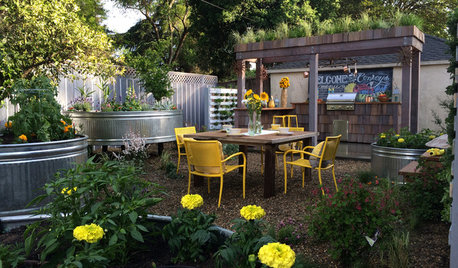Using lacto-bacteria to ferment peppers
On another forum I mentioned using Kefir starter to ferment roasted Hatch chili and make some seriously good hot sauce, and they thought I should mention it here where the True Believers congregate. The idea came a few years ago from a poster from Germany who thought everyone else was crazy to let the fermenting bacteria, like when making sauerkraut, just sort of randomly pick themselves out of the air in your kitchen, when one could introduce something that would guarantee good, if not spectacular, results. This is sorta what they do with wine and beer, and it made sense. So I tried it.
I buy a box, which is 2.2 bushels, of hot, roasted chili. It's put in a bag, I let it sweat and cool for a couple of hours, and collect the juice that inevitably drips through the plastic. When its cool enough to handle, I open the bag up, pull off the stems, and start layering the flattened, roasted chili's in a crock, an inch layer followed with a healthy sprinkle of salt. The object here is two tablespoons of salt to 5 lbs of chili, but a bit more or less isn't going to change much.
I get Kefir starter off the internet, or through a local health food shoppe. I get the powdered stuff. Kefir is a bacteria that will convert milk into a thick, drinkable curd, picture Gengis Khan and his horde snorking the stuff out of those leather canteens as they pillage villages looking for some decent chili. These days, Yoga practitioners sip the stuff with raspberries to bump their calcium, and I use it to ferment vegetables.
Anyway, I take the warm chili juice and whisk in a box of kefir starter, and pour it into the chili-salt crock, stir it up with a steel spoon, and then set a doubled, plastic bag full of water on top to seal it off. I set the crock in a cool (70 - 80F) spot, and I come back in 6 weeks. I run it through a food mill to mush it all up, and cut it with white wine vinegar so it pours a bit easier.
Its best like that. This is the 3rd year in a row I've done this, and its awesome. You'd have to try it to appreciate it, the smell alone will let you know that its very good stuff. It doesn't disappoint. Not surprisingly, it also corresponds when they slaughter hogs, so its pretty easy to make some awesome green chili pork for the freezer.
I will try, if I can, to use powdered yogurt starter in another batch this summer, and see if it works as well. I should also think that smaller quantities would do as well.




koreyk
fiedlermeister
Related Discussions
Fermenting Peppers
Q
Water+Vinegar during pepper mash fermentation?
Q
About making fermented hot pepper sauces
Q
Fermenting Pepper Sauce... Newbie ???'s
Q
fiedlermeister
balsamicv
John__ShowMe__USA
fiedlermeister
John__ShowMe__USA
zakker
John__ShowMe__USA
zakker
John A
John__ShowMe__USA
kolchak66_verizon_net
bobcat
dangould
John__ShowMe__USA
bobcat
John__ShowMe__USA
dangould
bobcat
dangould
dangould
lamalu
naturegirl_2007 5B SW Michigan
dangould
lamalu
John__ShowMe__USA
dangould
lamalu
John__ShowMe__USA
dangould
dangould
lamalu
dangould
zakker
dangould
lamalu
dangould
zakker
lamalu
lamalu
dangould
zakker
dangould
hubris007
BigDan1
simsedward
BigDan1
Opee
sundacks